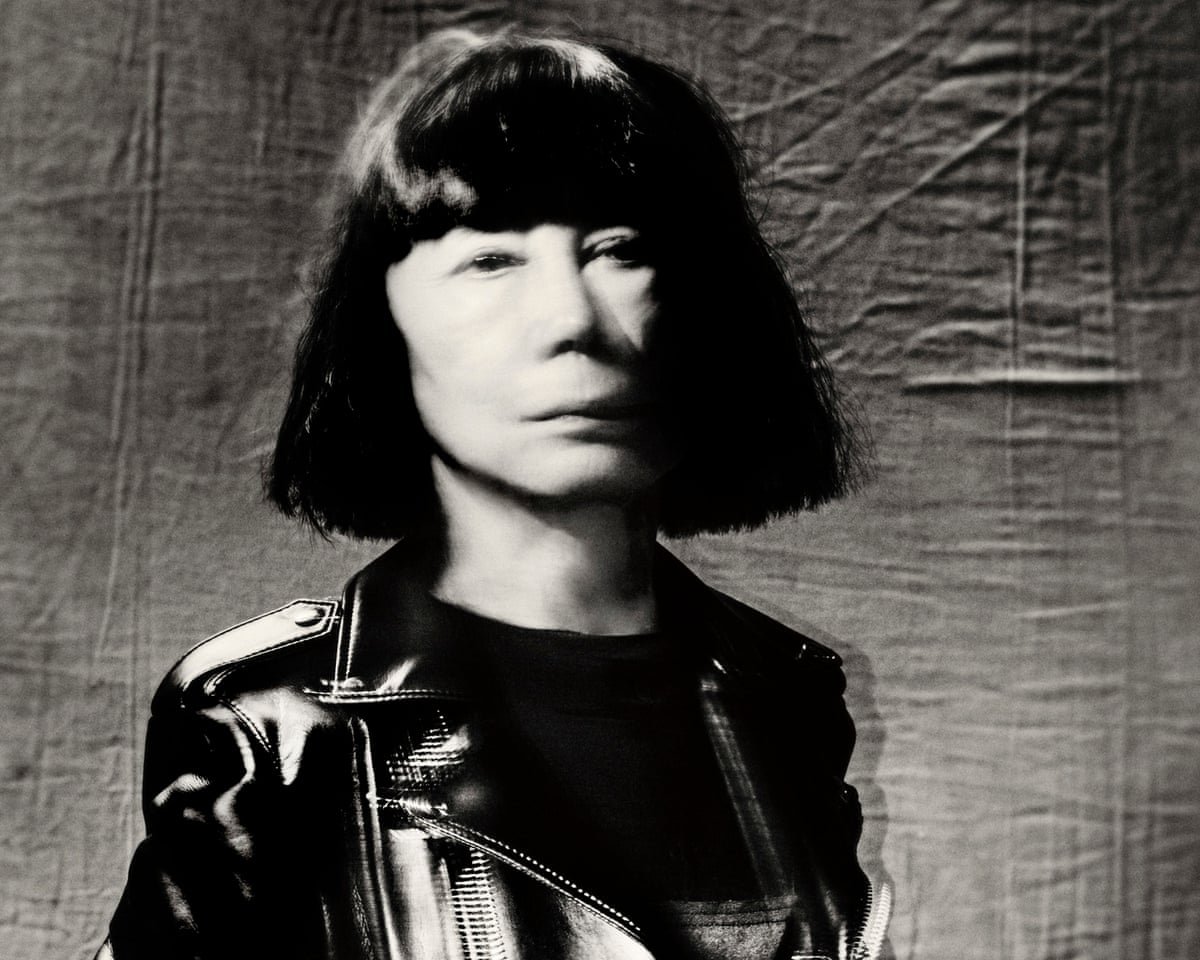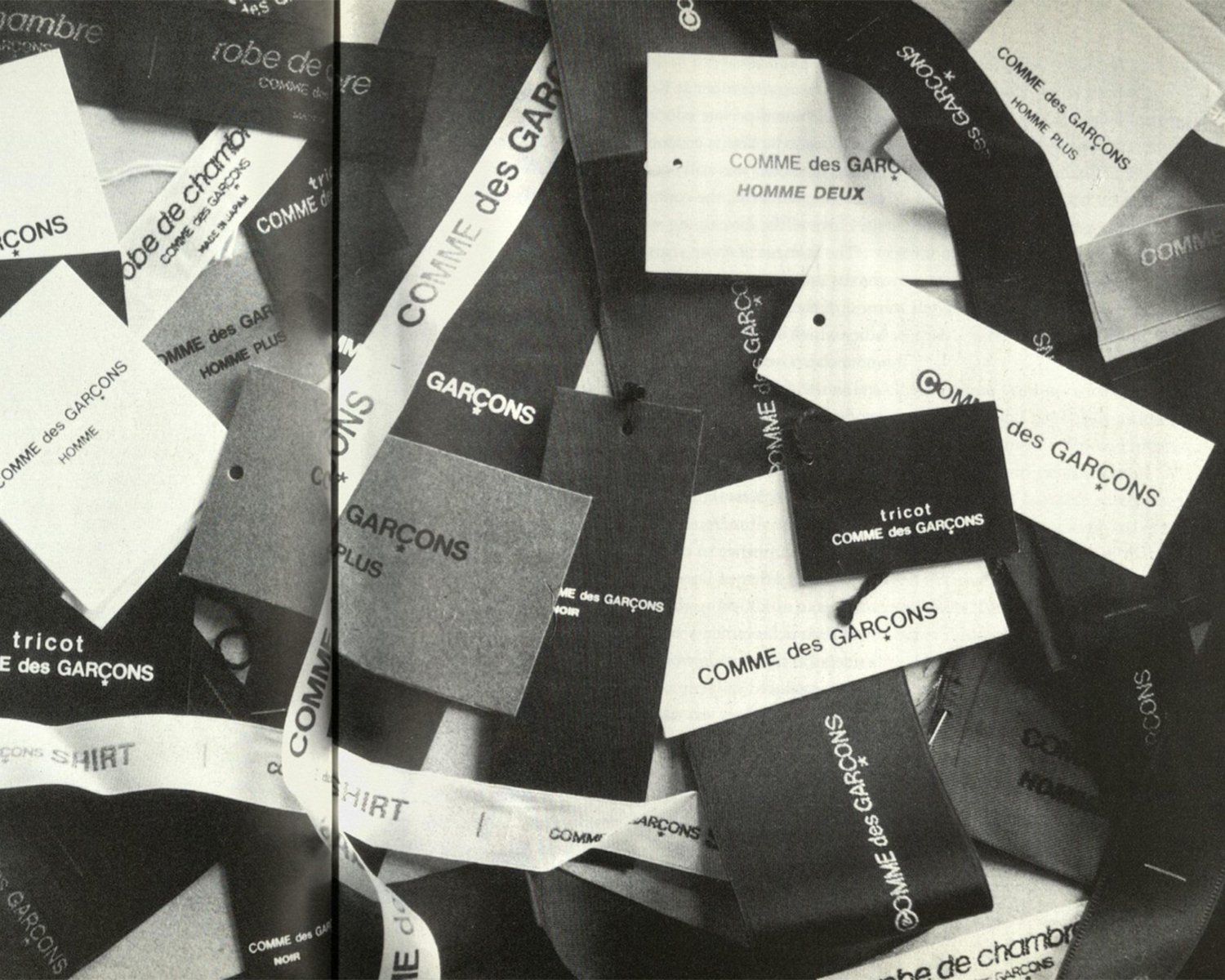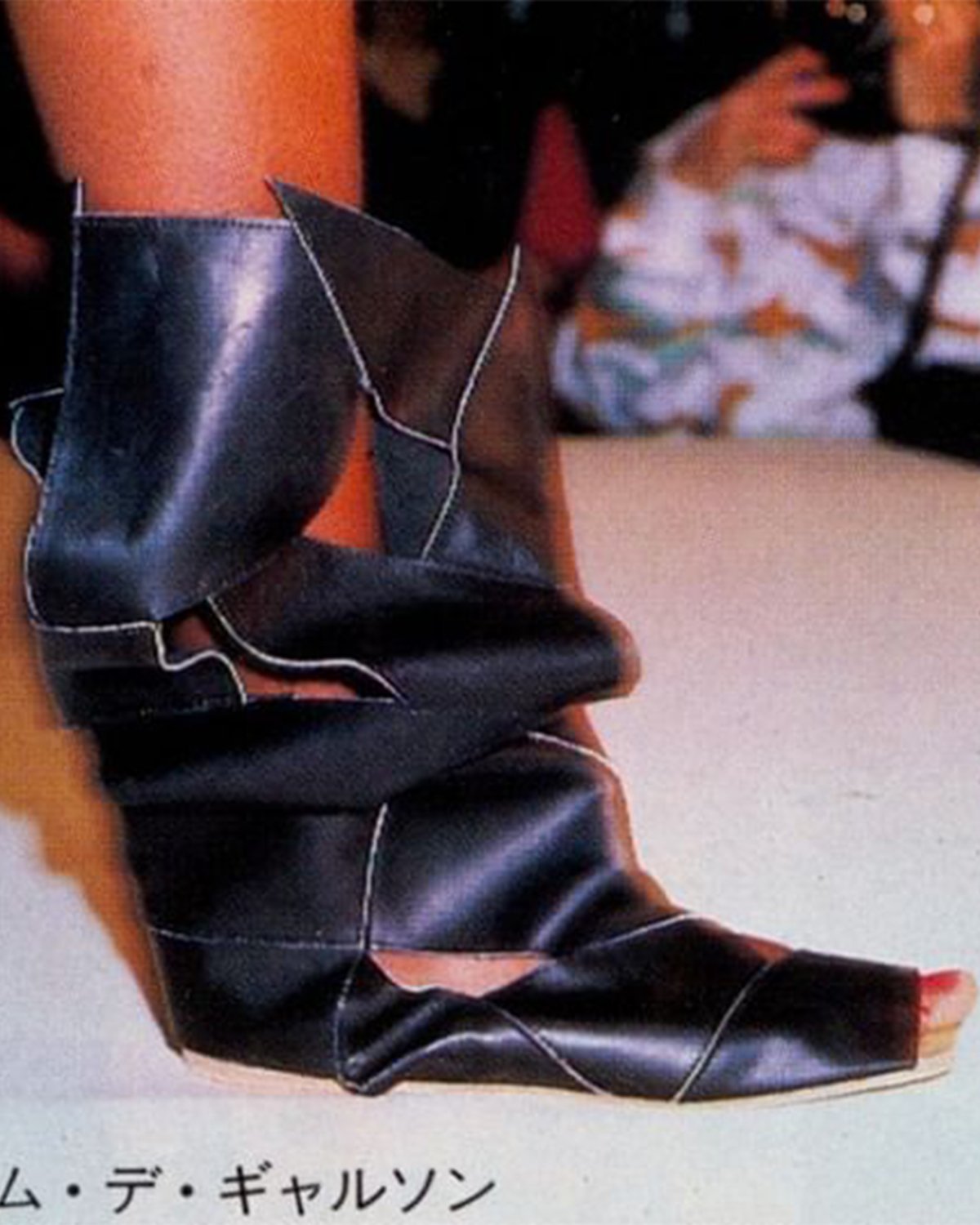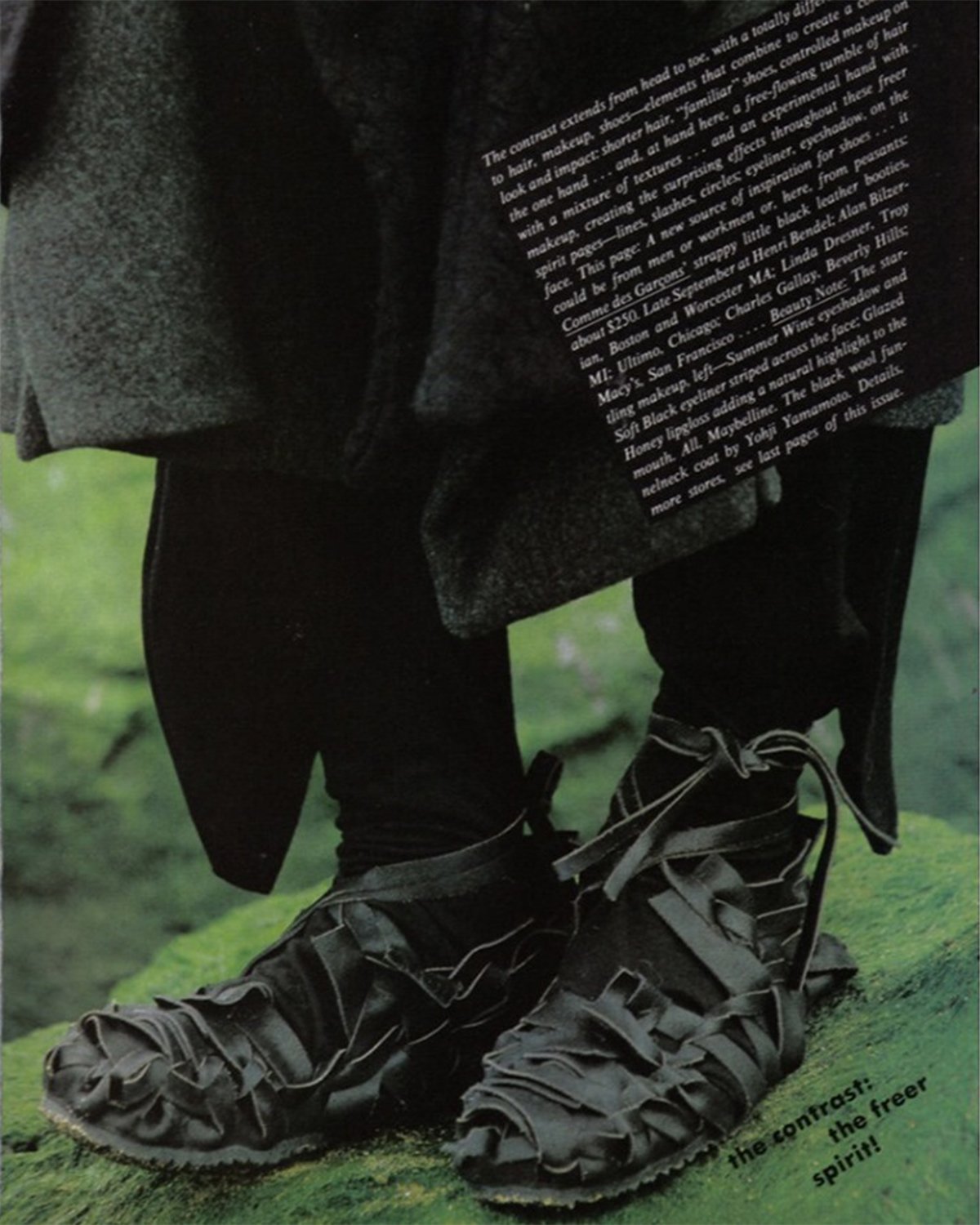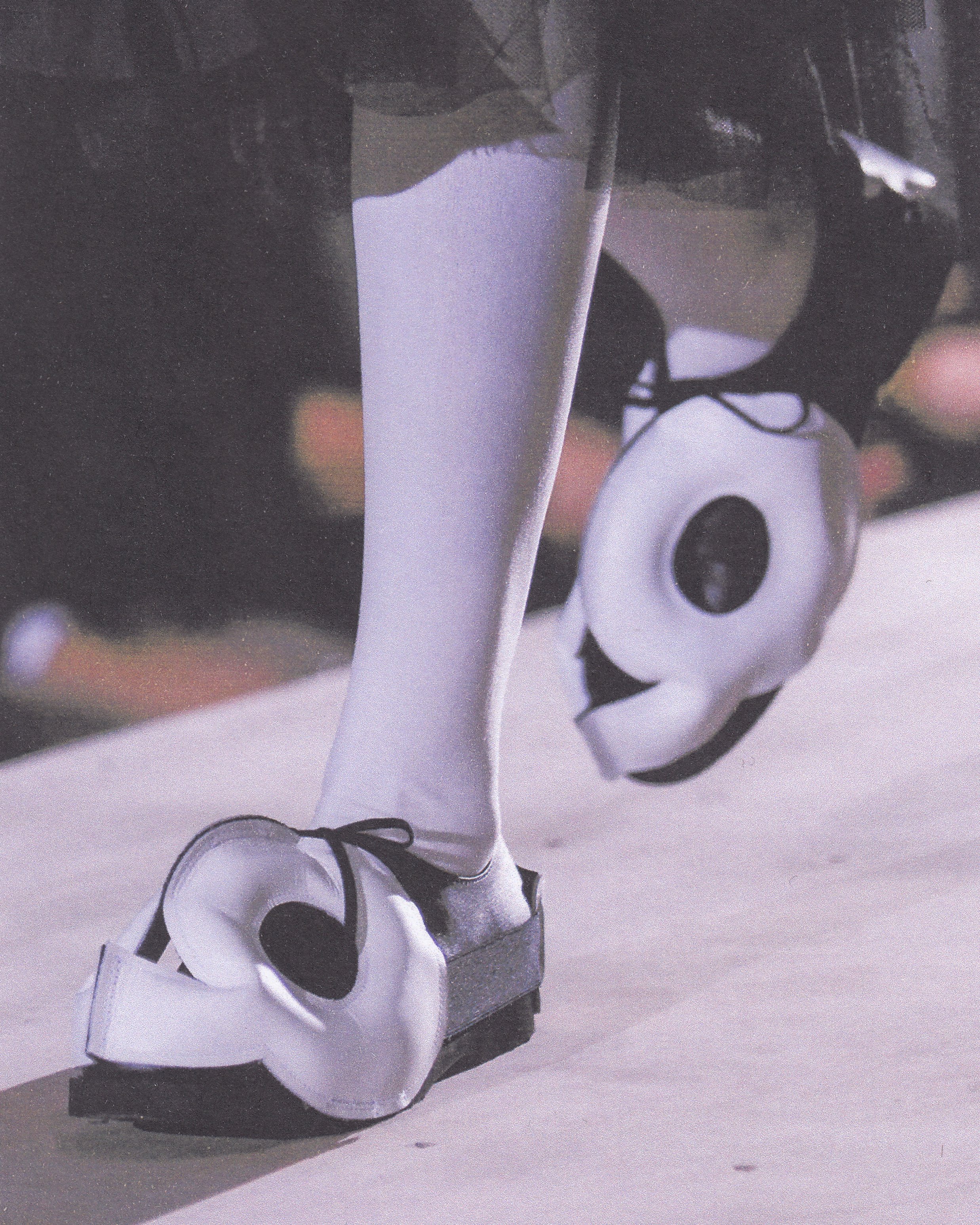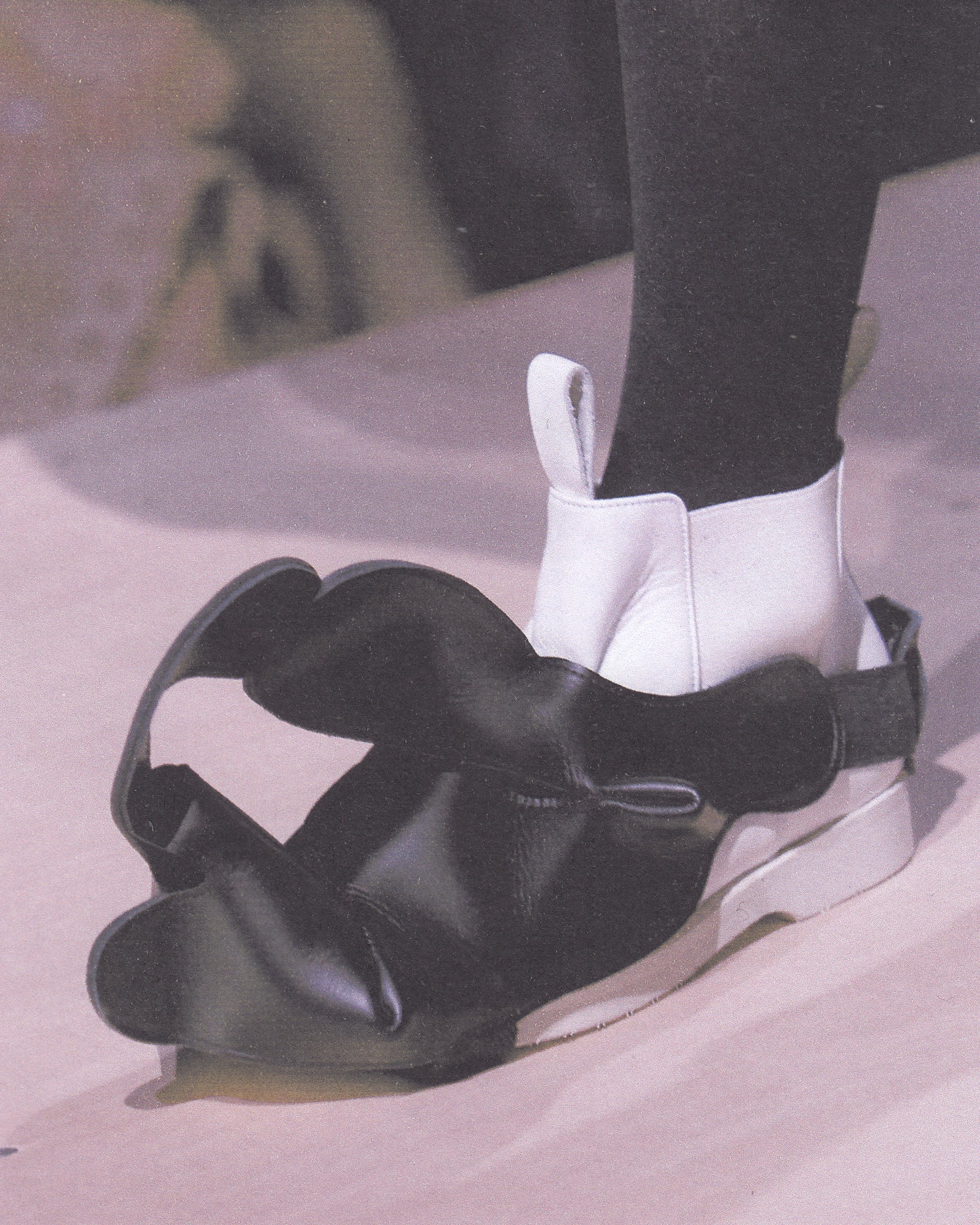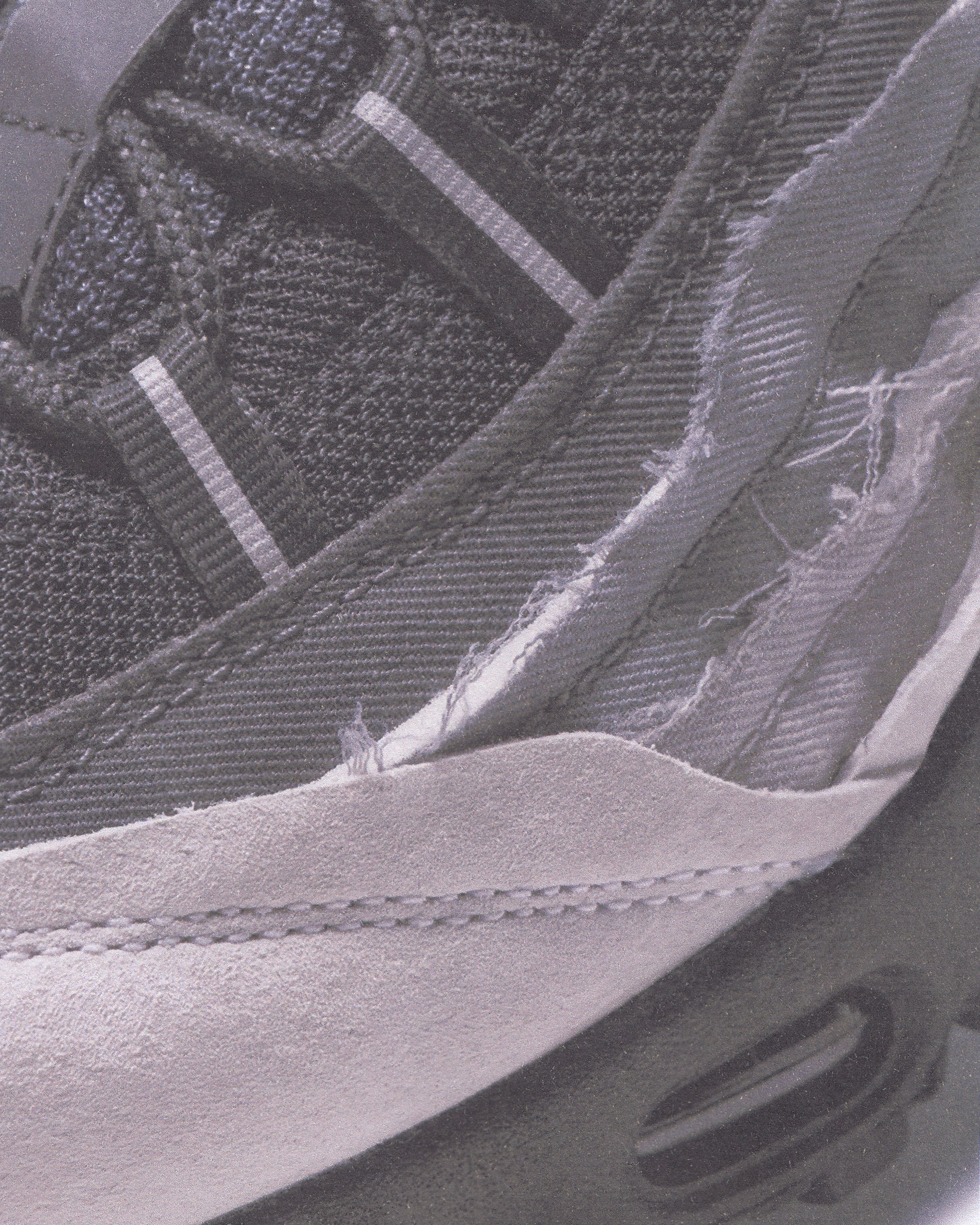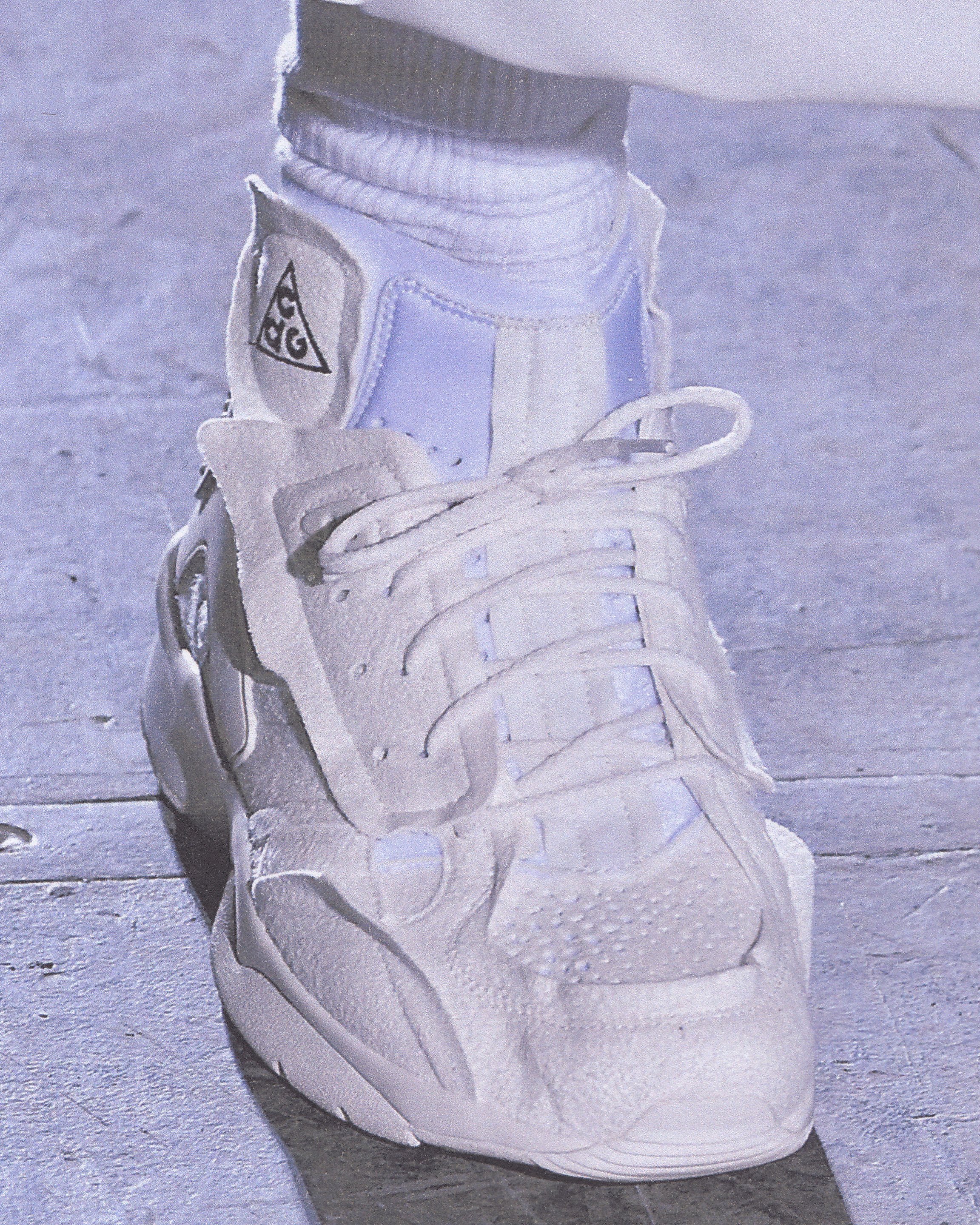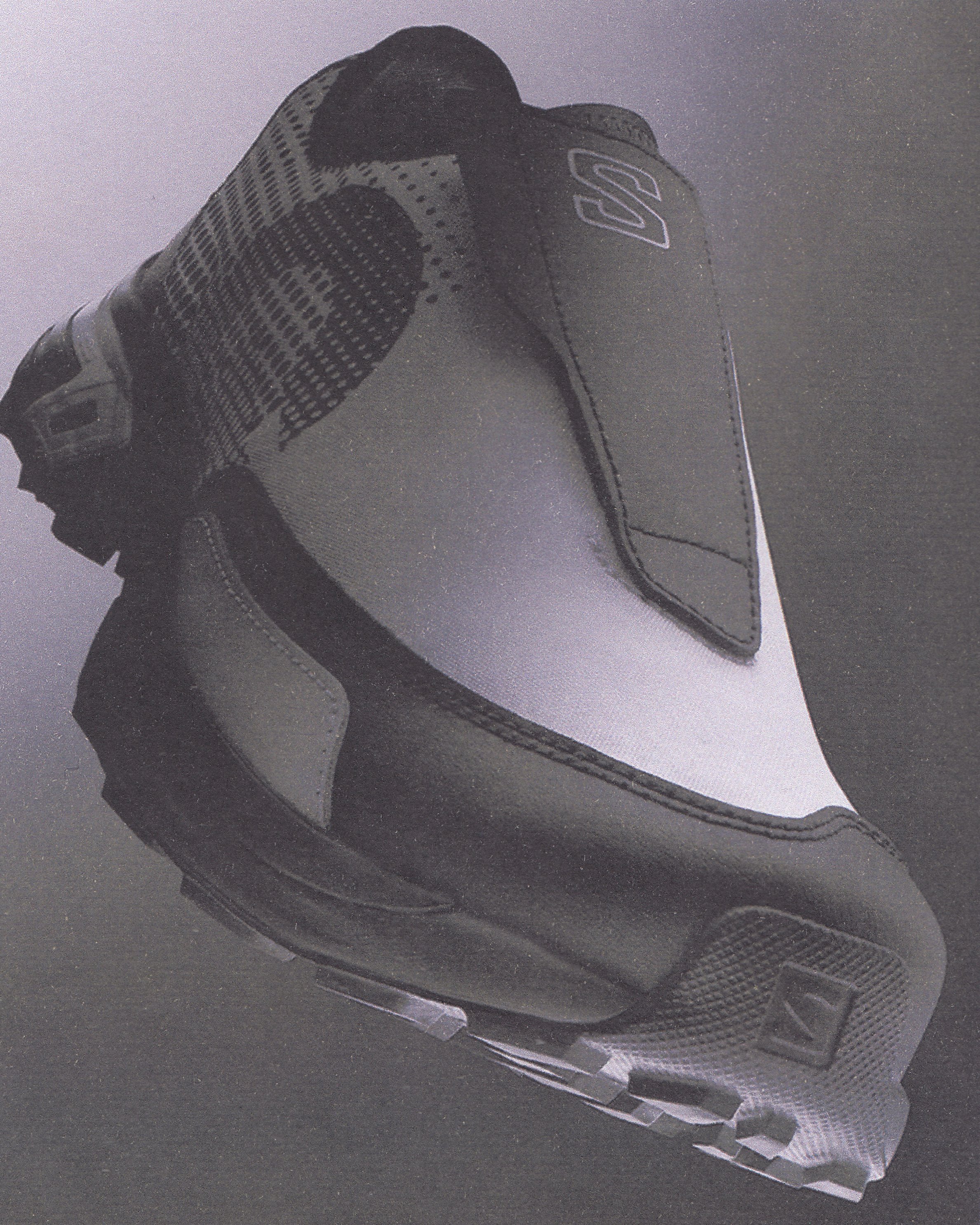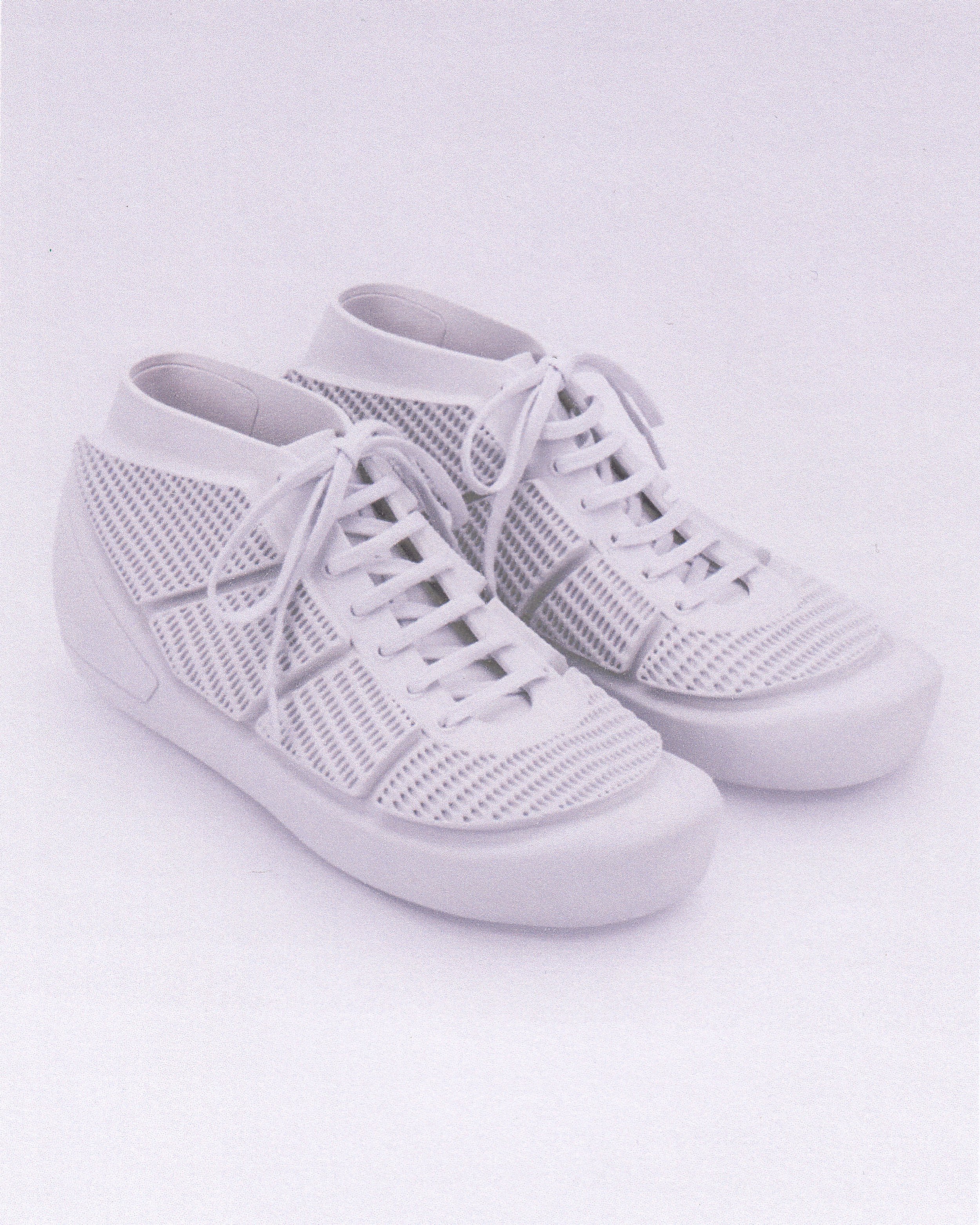Trust The Process: Comme des Garçons
Rei Kawakubo’s Balancing Act
Words: Siân Toolan
For some, Comme des Garçons plus footwear may equal little more than Converse Chuck 70s with an animated red heart, whose oversized eyes have peaked beneath hems across the globe for the last decade. Regardless of Comme des Garçons PLAY’s popularity, the Comme des Garçons empire, and its efforts in the footwear industry, equates to a great deal more than one pair of Chucks. From longstanding sneaker collaborations to exciting iterations of every dress shoe under the sun, we took a dive into CdG’s archive of footwear throughout recent years and picked out some highlights.
Founded by Rei Kawakubo in 1969, Comme des Garçons has evolved entirely into its own universe. A vast network of brands, ever-expanding and teaming with new life, it’s quite hard to wrap your head around all that is Comme, simply because there’s no other company, house or brand quite like it. Today, Comme des Garçons encapsulates a myriad of sub-brands, from Homme Plus to Tricot, the eponymous labels of its protégés, most notably Junya Watanabe, and a series of weirdly wonderful department stores, otherwise known as Dover Street Market. That’s not to mention its collaborative endeavours.
Since its debut in Paris in the spring of 1981, Comme des Garçons has become synonymous with challenging the status quo, changing and defining what is understood as fashion, especially in the West. Kawakubo’s “anti-fashion” attitude has shrouded the body in swathes of black, much to spectators’ chagrin, deconstructed patterns, exposed seams and invented entirely new abject silhouettes a la Spring 1997’s collection “Body Meets Dress, Dress Meets Body”, or “lumps and bumps”. Whilst Kawakubo has resisted defining her work and each collection beyond a few words, her designs have embraced Japanese principles such as wabi-sabi (imperfection), mu (emptiness) and ma (space). Ultimately, Comme des Garçons is punk, directly at times in its aesthetic, but always in its approach, with radical proportions, garment construction and even its business model.
Comme des Garçons and its creative umbrella can be viewed as an artistic entity, where commodity is an afterthought, as much as it can be seen as a masterly profitable business. It’s playfully paradoxical, occupying, as Kawakubo puts it, an “in between-ness’”as projects sit at points both across and at each end of the spectrum of commercial and avant-garde. From simple tees to sculptural, body-distorting designs, Comme consistently delivers new, unexpected ideas and clothing to make you think. So where exactly does footwear come into this?
Over the years, Kawakubo has put her spin on ballerina flats, mules, a variety of leather dress shoes from Derbys, to Oxfords and Chelsea boots that would imbue each collection with a somewhat sartorial context and allow the individual garments and their construction to speak for themselves. Perhaps, when a collection’s sensibility was all too sartorial in itself, or too easily understood, Kawakubo would deliver models in the opposite: high-top sneakers or lug-soled Mary Janes. While Spring 1996 saw a “Kaleidoscope” of colours that included colour-blocked bowling shoes, Comme des Garçons did little to push its ethos in the realm of footwear until the turn of the millennium.
In 1999, before Comme des Garçons PLAY even existed, and way before luxury brands and sneakers collaborated weekly, Junya Watanabe Comme des Garçons collaborated with Nike on the Zoom Haven. Whilst we’re focusing on Kawakubo’s lesser known, experimental takes on footwear design, separate to Watanabe’s distinctive work, this move established a connection with Nike that not only changed Comme’s footwear game for good, but sowed the seeds for the future of high fashion sneaker collaborations.
Comme des Garçons PLAY joined forces with Converse for the first time in 2009 with the Chuck Taylor All Star, a predecessor to the iconic 70s later released in 2015. With stripped back stitching, the minimal sneaker was designed entirely to draw attention to PLAY’s lovable logo. In later years, CdG have applied the same minimalism to their collaborations with heritage brands like Dr.Martens and Novesta, adorning their original direct injection model with statement branding. This approach may appear, at times, as the bare minimum, but it's an approach that prioritises timelessness and quality whilst giving reign to the season’s garments. In 2013, BLACK Comme des Garçons x Nike Blazer High & Low, made no alterations to Nike’s iconic models other than rendering every aspect, from outsole to panelling, in premium black leather and suede. Similar could be said of the Comme des Garçons x Nike Air VaporMax that came in 2017. Rendered in all-black or all-white, the shoes featured a branded tab in absence of laces, yet, it gained so much traction it resurrected the hype Nike had been missing. If Comme’s 1981 debut made black, as Vogue puts it, “the colour of fashion”, tapping into this selective simplicity via footwear is testament to the legacy, effect and a crucial element of the design logic of the CdG universe.
That’s not to say Kawakubo’s approach is always so reserved. Under Comme des Garçons and Comme des Garçons Homme Plus, Kawakubo’s forays into footwear have aligned with garment construction, exploring innovation, materiality and deconstruction, by breaking down, rebuilding and inverting classic silhouettes and concepts. In Spring 2014, Kawakubo offered abstract structural shoe covers, designed with an elasticated slingback leather to rest like clouds across the toe. For Fall 2015, following the success of Comme SHIRT’s plastic paper tote bag, Kawakubo rendered footwear from the material: brown paper encased in transparent PVC in the style of classic Derby shoes and heeled pumps. Finished with contrasting black top-stitching, visually, the simple materials assemble quite unlike any footwear we’ve seen before. Two years later, PVC reappeared in Comme des Garçons HOMME PLUS x Nike Dunk High Clear, directly aligning with the ideas of mu and ma, with panelled construction that exposed its wearer’s socks.
Comme des Garçons x Nike ACG Air Mowabb blended the brand’s monochromatic persuasion with varied panelled construction of suede and neoprene to create a textured, dimensional upper. Likewise, the Comme des Garçons x Nike Shox TL, the Nike Air Force 1 Mid and the Homme Plus Nike Air Max 95 that followed examined each shoe in their rawest form, cut-and-stitched back together like Frankenstein’s monster, or rather 1997’s “lumps and bumps”. The Comme des Garçons x Nike Shox TL featured an exaggerated frayed, raw hem finish and a garish gold, cuban-link branded chain across the vamp. The Nike Air Force 1 Mid White explored the concept of newness for CdG’s “Neo Future” collection with additional foam to emphasise the silhouette’s signature lines, as well as its Swoosh branding, and a branded embossed proprioceptors belt, a new application for the AF1. This combination of texture and innovative technique has been expanded as of late, with Comme des Garçons HOMME Plus x MELISSA Craft Geometric High Tops, HOMME PLUS x Nike Air Foamposite One, and CdG’s ongoing collaboration with Salomon.
Comme des Garçons’ mainline began working with Brazilian shoe brand Melissa for Spring 2018 and it wasn’t long before Homme Plus followed suit. In the same year, they debuted a mid-top sneaker constructed from Melissa’s unique, flexible PVC MELFLEX™. Injection moulded in one piece, the design boasted an unexpected combination of geometric shapes that appeared as if woven fabric. Similarly, while Nike’s Air Foamposite Ones are known for their signature ribbed base layers, Kawakubo’s 2021 vision saw the exterior shell customised for the first time, to feature a haptic, three-dimensional ripple pattern that covers the shoes forefoot and midfoot. Earlier the same year, Kawakubo presented Comme des Garçons Spring 2021 collection, titled “Dissonance”, and one thing caught our eye: all of the shoes were a collaborative effort, two of which were designed with Salomon. With two new original styles, Comme and Salomon came together to develop the Sense Feel, an evolution of the marshmallow platforms from CDG's Spring 2013 collection, and the RX 3.0, teched-out iterations of Mary-Janes (a Comme staple). Employing methods of construction and finishings entirely new to Salomon’s production, Kawakubo rejoiced in the openness, willingness and expertise of the collaboration, and for 2022, the pair are introducing two new silhouettes: the SR90, a sleek, classic trail sneaker, and the SR901E, a technically advanced piece of footwear, inspired by cross-country skiing. Both are expected in, you guessed it, monochromatic colours.
As a brand concerned with the harmony of opposites, it’d be impossible for Comme to offer minimalist constructions without some maximalist madness along the way. Whilst many of Comme’s collaboration have occupied the in-between, Kawakubo has not shied away from the strange and less-salable. In 2019, she reimagined the Nike Foot Tent, despite it being ruled as a flop by its original, infamous designer Tinker Hatfield. We’ve seen the Cortez developed to sky-high heights with an obnoxious striped platform while CdG Homme Plus offered a wilder, playful take on the Air Force 1 with an “07 Mid Dinosaur Pack” that featured pronounced dinosaur moulds bolted over the toe box. In 2018’s "Multi Dimensional Graffiti” we witnessed a teenage fashion fantasy, with the incredibly divisive CdG x Nike Machomai boots. The design attached boxing silhouette upper, in blue, green and red, over a chunky leather heel. A precursor to 2021’s Comme Des Garcons x Nike Premier, perhaps they wouldn’t look too out of place today, amidst a sea of football-inspired heels and Balenciaga.
It's safe to say that Comme’s boundary-pushing collaborations have influenced its solo creations as well as the footwear industry at large. In 2015, three years before Loewe debuted their elven pointed sneaker, Homme Plus hit us with the Jugo Boot. Inspired by Mexican Guarachero boots, and the music culture they’re associated with, Homme Plus’s Chelsea boot iteration featured an absurdly 21-inch long curled toe. In the same vein, before Balenciaga established their mediaeval Chevalier Derby, for Fall 2016 CdG Homme Plus rendered a layered, leather derby in metallic grey that resembled gilded armour. It’s impossible to know where Kawakubo, and her crew of collaborators, source their ideas, because they’re really not in the business to share. Whilst so much of Comme’s magic eludes words and replication, their effect on footwear over the last two decades is something we know for sure.
We’ve merely scratched the surface of Comme’s impact over the last two decades, never mind the last fifty years. Successfully combining minimalism with the avant-garde, commericiality with artistry, streetwear with luxury, it’s time we see Comme des Garçons as the footwear powerhouse it rightfully is. As Comme des Garçons’ mainline resurrected the long forgotten Nike Air Sunder Max just last month, we’re undeniably excited to see what facet of the universe breathes new life next.

